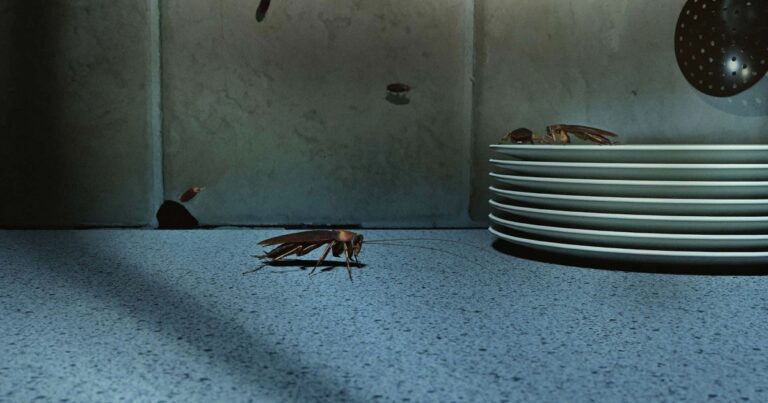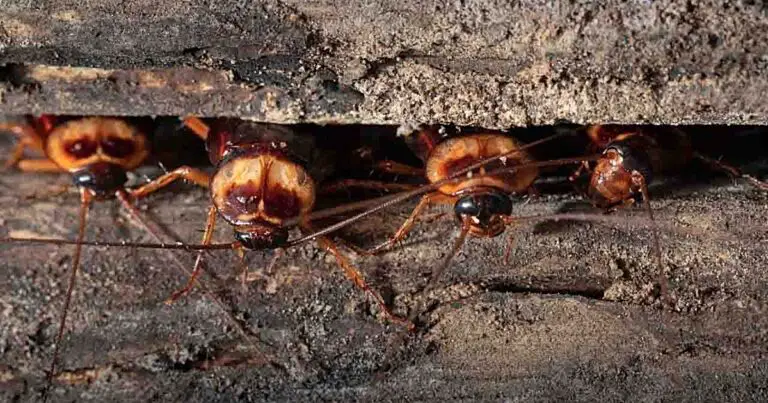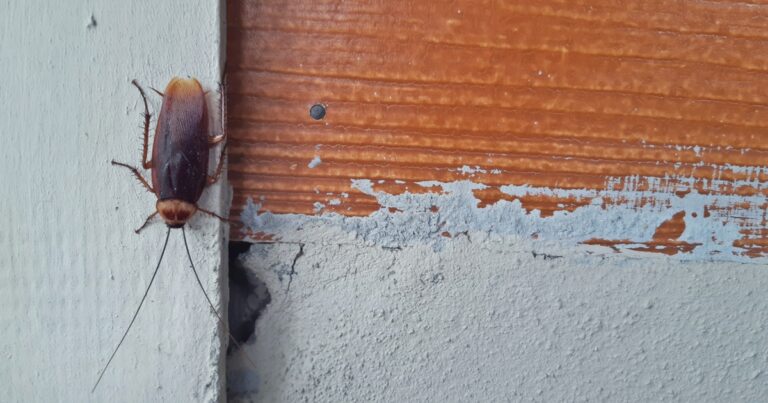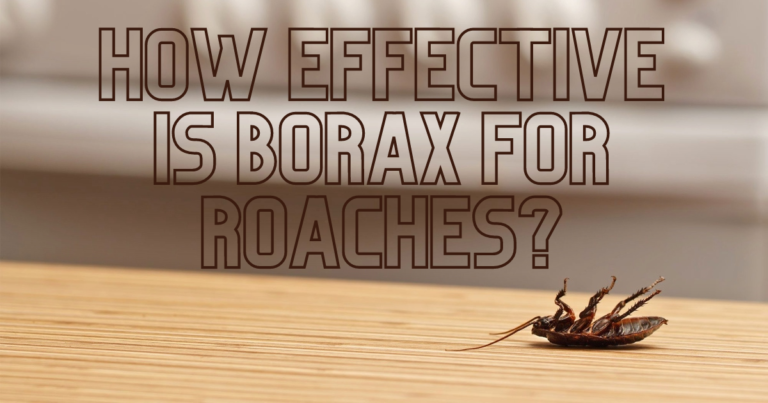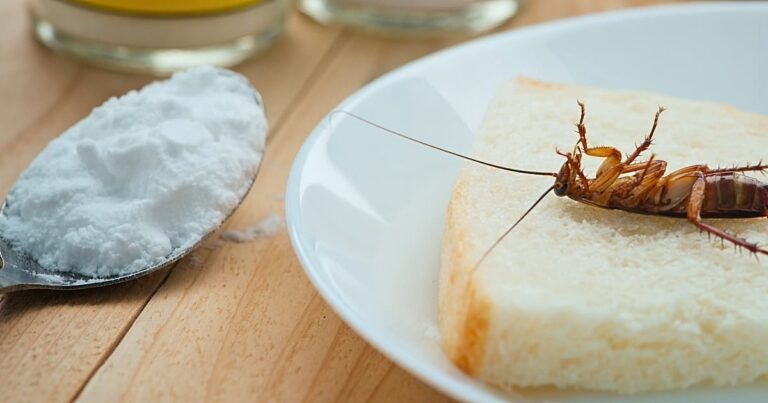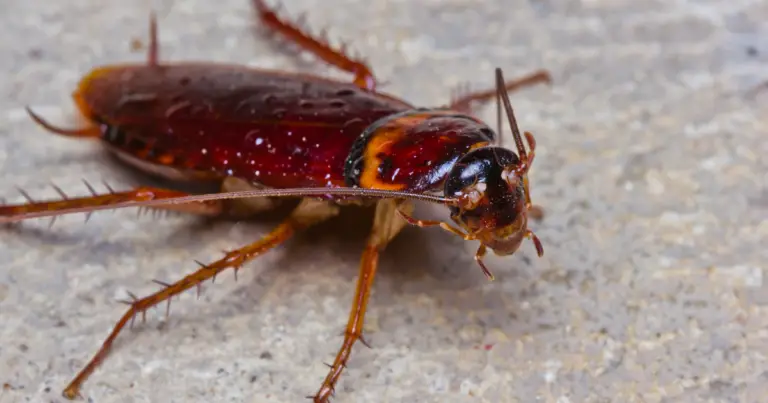Do Cockroaches Have Blood? (Answered)
Do cockroaches have blood? This is a question that has puzzled many people for years. Although the answer may seem simple, it’s not as straightforward as you might think. Cockroaches do have blood, but it’s not the same type of blood that we have.
Cockroaches have what is called hemolymph instead of blood. Hemolymph is a clear liquid that carries nutrients and oxygen to all parts of the cockroach’s body. Unlike our blood, which is red due to the presence of iron, hemolymph is usually colorless.
Do Cockroaches Have Blood?
As anyone who has ever seen a cockroach knows, these insects do not have red blood as humans do. So, do cockroaches have blood at all? The answer is yes – but it isn’t exactly the same as ours.
Cockroaches have something called hemolymph, which flows through their bodies in a system similar to our circulatory system. However, unlike our blood, cockroach hemolymph is clear and does not contain oxygen-carrying hemoglobin. Instead, oxygen is diffused throughout the cockroach’s body via a network of tiny tubes called tracheae.
While hemolymph is the insect equivalent of blood, it does not contain red blood cells as ours do. Instead, cockroaches have something called fat bodies, which are similar to our liver and store energy. Fat bodies also produce enzymes that help the cockroach digest food and fight infection.
So, there you have it – now you know that cockroaches do have blood, but it’s not exactly the same as ours!
Fun fact: Because cockroaches do not have lungs, they do not cough or sneeze!
Do Cockroaches Have A Heart?
Cockroaches do have a heart but it is not like the human heart. The cockroach heart is a tube-like structure that runs the length of the body and functions to pump hemolymph (blood) throughout.
The human heart has four chambers whereas a cockroach heart has three chambers in the thorax and nine in the abdomen.
While cockroaches do have blood, their bodies work differently than ours in many ways. For example, they do not have lungs but instead, breathe through tiny holes all over their body called spiracles. And, as anyone who has ever tried to kill a cockroach knows, they are very difficult to squish! This is because their exoskeleton (hard outer shell) is incredibly tough and helps protect them from predators.
Do Cockroaches Bleed?
While cockroaches do have blood, they do not bleed in the same way that we do when we are injured. That’s because their blood vessels are not connected in the same way as ours. Instead, cockroaches have what is called an open circulatory system, in which blood vessels empty into a central cavity called the hemocoel. This means that if a cockroach is injured, its hemolymph will leak out into the hemocoel rather than spurting from the wound as our blood does.
Cockroaches are interesting creatures that are very different from us in many ways. However, they do have blood and a circulatory system, even if it isn’t exactly the same as ours. Next time you see one of these insects scurrying around, you can take comfort in knowing that squishing it will not make it bleed!
What Color Is Cockroach Blood?
Cockroaches have clear blood, which means it does not contain the oxygen-carrying pigment hemoglobin as our red blood does. This is because cockroaches do not use their blood to transport oxygen but instead breathe through a system of tiny tubes called tracheae.
While you may never see cockroach blood unless you squish one of these insects, it is interesting to know that they do have blood and a circulatory system similar to ours – just in a very different form!
Cockroaches that are carrying eggs may bleed a yellow or orange color if you are to crush or kill them. This is due to the xanthophylls, which are yellow pigments, in their blood. These xanthophylls help cockroaches produce vitamin A and also protect their eggs from damage. So, if you see a cockroach bleeding a yellow or orange color, it may be because it is carrying eggs!
What Is Cockroach Blood Made Of?
Cockroach blood is a complex solution of water, inorganic salts, ions, and organic compounds. It consists of high concentrations of proteins, amino acids, lipids, carbohydrates, and glycerol. Cockroach blood is mostly water (20 to 50%), with the rest made up of organic and inorganic chemicals.
Cockroach blood also contains hemocytes, which are white blood cells that help fight infection and disease. These cells make up 0.5 to 2% of the total cockroach blood volume. Hemocytes also help repair damaged tissues, produce new cells, and protect the cockroach from pathogens.
While cockroach blood may not be red like ours, it is still an important part of these insects’ anatomy. And, as anyone who has ever tried to squish a cockroach knows, it can be remarkably difficult to do! This is because their exoskeletons are very tough and offer protection from predators – something that we humans could definitely learn from!
Is Cockroach Blood Harmful to Humans?
While cockroach blood is not necessarily harmful to humans, it can cause allergies in some people. This is because cockroaches carry proteins in their saliva, feces, and blood that can trigger an allergic reaction in sensitive individuals.
In fact, between 23% and 60% of people living in urban areas are allergic to cockroach allergens. These proteins can cause a variety of symptoms including sneezing, runny nose, watery eyes, and difficulty breathing. In severe cases, they can even trigger an asthma attack.
So while cockroach blood may not be harmful to humans directly, it can certainly cause some problems for those who are allergic to it!
Conclusion
Cockroaches are fascinating creatures that are very different from us in many ways. One of the most interesting things about them is that they have blood, even though it doesn’t look like ours. Cockroach blood is clear and does not contain hemoglobin, but it does have important functions in these insects’ bodies.
While cockroach blood may not be harmful to humans directly, it can cause allergies in some people. So if you’re ever unfortunate enough to squish one of these creatures, you may want to wash your hands afterwards just to be safe!


